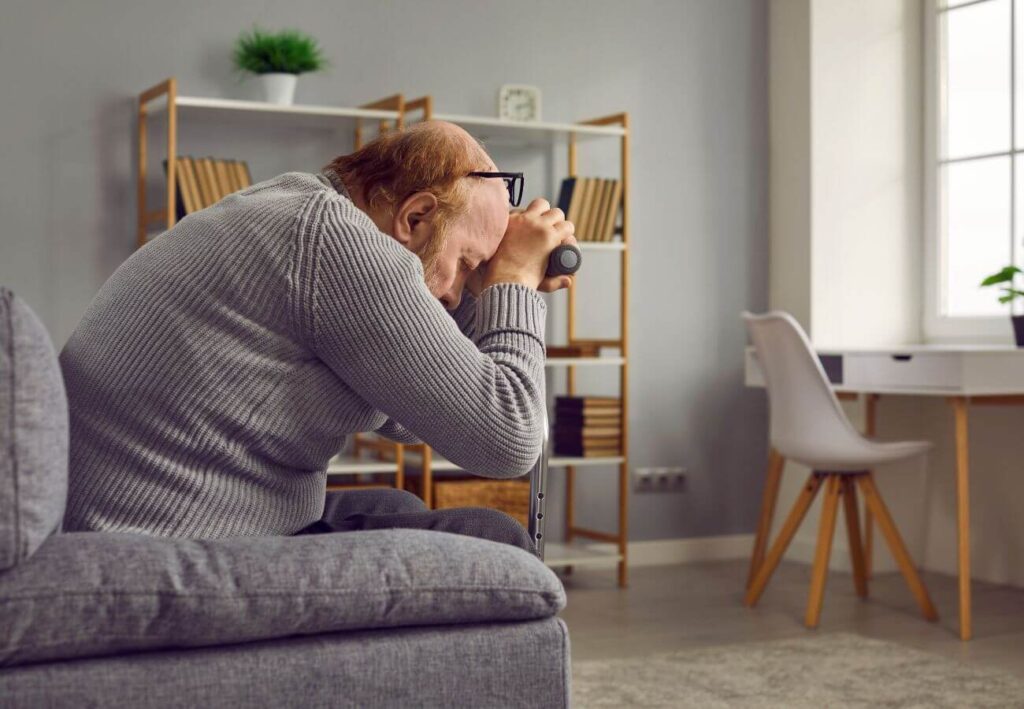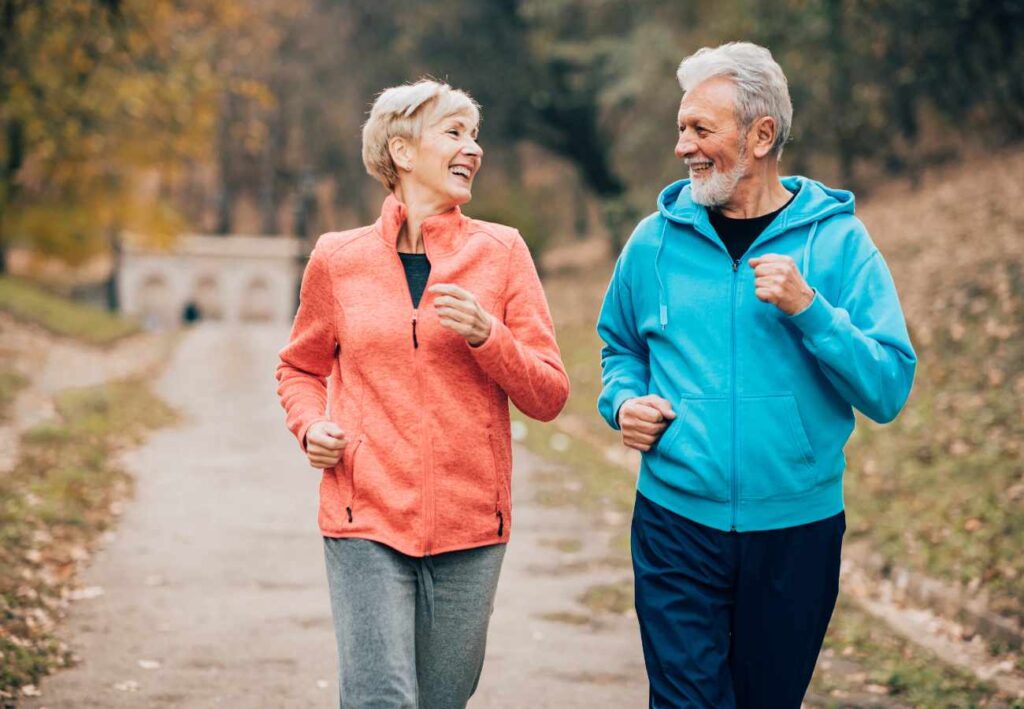Ensuring Safety and Security: Best Practices for Elder Care Facilities
As the guardians of safety and comfort for the elder care, ensuring a secure environment in care facilities is paramount. In this comprehensive guide, we’ll delve into best practices for elder care homes, offering insights and practical tips on enhancing security for seniors. Whether you’re a caregiver, facility manager, or someone seeking the best for your loved ones, these measures are designed to foster a safe and nurturing environment.
1. Physical Security Measures:
a. Access Control Systems:
Access control systems are designed to restrict and monitor entry to a physical space. They can include technologies such as key cards, biometric scanners, or PIN codes. These systems help ensure that only authorized individuals can gain access to sensitive areas, reducing the risk of unauthorized entry and potential security breaches. Additionally, access control systems can provide a record of who accessed a particular area and at what time, aiding in investigations if any incidents occur.
Implementing robust access control systems ensures that only authorized individuals can enter designated areas. This can include key card entry, biometric scanners, and surveillance.
b. Video Surveillance:
Video surveillance is another important component of a comprehensive security system. It involves the use of cameras to monitor and record activities in various areas, providing a visual record that can be reviewed in case of suspicious or criminal behaviour. Video surveillance not only acts as a deterrent to potential intruders but also provides valuable evidence for investigations and can help identify perpetrators in the event of a security breach.
Strategically placed video cameras act as a deterrent and provide real-time monitoring. This not only enhances security but also aids in investigations if an incident occurs.
c. Adequate Lighting:
Adequate lighting is another crucial component of a comprehensive security system. Well-lit areas not only deter potential criminals by increasing visibility but also help in capturing clear video footage for identification purposes. Additionally, proper lighting can create a sense of safety and comfort for individuals using the monitored areas, further enhancing overall security measures.
Well-lit premises are less prone to incidents. Ensure that all areas, including entrances, exits, and outdoor spaces, are adequately illuminated for both safety and security.
2. Emergency Preparedness:
a. Regular Drills:
Regular drills are an essential part of emergency preparedness as they help individuals and organizations practice their response to various emergencies. These drills simulate real-life scenarios and allow participants to identify any gaps in their preparedness plans, enabling them to make necessary improvements. Additionally, regular drills also help build confidence and familiarity with emergency procedures, ensuring a more efficient and effective response during an actual emergency situation.
Conducting regular emergency drills ensures that both staff and residents are familiar with evacuation procedures. This includes fire drills, natural disaster preparedness, and other emergency scenarios.
b. Emergency Contact Information:
It is crucial to update and maintain a comprehensive list of emergency contact information for all staff members and residents. This includes contact numbers for local authorities, medical facilities, and key personnel within the organization. Having this information readily available can expedite communication and coordination during an emergency, ultimately enhancing the overall response and minimizing potential risks.
Maintain updated emergency contact information for each resident. This ensures swift communication with family members in case of an emergency.
c. Medical Emergency Protocols:
Establish clear protocols for responding to medical emergencies within the organization. These protocols should outline the steps to be taken in the event of a medical emergency, including who to contact, how to provide immediate assistance, and when to involve medical professionals. Regularly review and update these protocols to ensure they align with current best practices and any changes in staff or resident needs. Additionally, provide training and education for staff members on these protocols to ensure they are prepared to respond effectively in a medical emergency situation.
Establish clear protocols for handling medical emergencies. Ensure that staff is trained to respond promptly and effectively to various health crises.
3. Staff Training and Awareness:
a. Background Checks:
One important aspect of staff training and awareness is conducting thorough background checks. This helps ensure that individuals with a history of criminal behaviour or misconduct are not hired, reducing the risk of potential harm to the organization and its stakeholders. Additionally, staff should be trained on how to recognize and report any suspicious activities or behaviours, fostering a culture of vigilance and security awareness within the organization.
Thorough background checks for all staff members are non-negotiable. This includes criminal background checks and verification of qualifications.
b. Regular Training Programs:
Regular training programs should be implemented to keep staff members updated on the latest security protocols and best practices. These programs should cover topics such as cybersecurity, emergency response procedures, and physical security measures. By regularly educating employees, the organization can enhance its overall security posture and reduce the likelihood of security breaches or incidents. It is also important to periodically assess the effectiveness of these training programs to identify any gaps or areas for improvement.
Continuous training programs keep staff informed about the latest safety protocols and ensure a proactive approach to security.
c. Identification Badges:
Another important aspect of physical security measures is the implementation of identification badges. These badges help to easily identify authorized personnel and restrict access to certain areas within the organization. By requiring employees to wear their identification badges at all times, the organization can enhance its overall security and prevent unauthorized individuals from gaining access to sensitive areas. Additionally, regular audits should be conducted to ensure that all employees have valid identification badges and that any lost or stolen badges are promptly reported and deactivated.
Clearly visible identification badges for staff help residents recognize authorized personnel, fostering a sense of familiarity and security and increasing the quality elder care.
4. Fall Prevention:
a. Non-Slip Flooring:
Install non-slip flooring in areas prone to water exposure, such as bathrooms and kitchens. This minimizes the risk of slips and falls.
b. Handrails and Grab Bars:
Install handrails and grab bars in areas where balance and stability are crucial, such as staircases and showers. These provide support and help prevent accidents by offering something to hold onto.
Strategically placed handrails and grab bars provide additional support, especially in bathrooms and corridors.
c. Regular Maintenance:
Regular maintenance is essential for fall prevention. This includes inspecting and repairing any loose or damaged flooring, handrails, or grab bars. Additionally, it is important to ensure that lighting is adequate in all areas to help prevent trips and falls. By regularly maintaining these safety features, the risk of accidents can be significantly reduced.
Promptly address any wear and tear, including loose carpets or uneven flooring, to eliminate potential tripping hazards.
5. Medication Management:
a. Controlled Access:
One way to ensure controlled access to medication is by implementing a secure storage system with limited key access. This helps prevent unauthorized individuals from obtaining or tampering with medications. Additionally, regular audits and inventory checks can be conducted to monitor the distribution and usage of medication, further enhancing controlled access.
Restrict access to medication to authorized personnel only. Implement secure storage solutions to prevent unauthorized access.
b. Regular Audits:
Regular audits are an essential component of medication management as they help identify any discrepancies or errors in the distribution and usage of medication. These audits can be conducted by a designated team or individual who is responsible for reviewing inventory records, checking expiration dates, and ensuring proper documentation of medication transactions. By regularly conducting audits, healthcare facilities can maintain accountability and ensure that medications are being used appropriately and efficiently.
Conduct regular audits of medication stocks and usage. This ensures that residents of elder care homes receive the correct medications in the prescribed doses.
c. Staff Training on Medication Administration:
Staff training on medication administration is crucial to ensure that healthcare professionals are knowledgeable and competent in handling medications. This includes proper techniques for administering different types of medications, understanding potential side effects and interactions, and adhering to safety protocols. Regular training sessions should be conducted to update staff on new medications and guidelines, reinforcing the importance of accurate medication administration and reducing the risk of errors.
Provide specialized training for staff responsible for administering medications. This minimizes the risk of errors.
6. Communication Systems:
a. Emergency Call Systems:
Emergency call systems are designed to quickly and efficiently connect individuals in need with emergency services. These systems are crucial in situations where immediate assistance is required, such as medical emergencies or accidents. They often incorporate features such as GPS tracking and automatic alerts to ensure that help can be dispatched promptly.
Implement emergency call systems in resident rooms. This allows residents to alert staff in case of an urgent situation.
b. Regular Communication Channels:
Regular communication channels are essential for effective communication within an organization or community. These channels can include email, phone calls, meetings, and other forms of direct communication. They help facilitate information sharing, collaboration, and decision-making processes. It is important to establish clear and accessible regular communication channels to ensure smooth and efficient communication among team members or residents.
Establish regular communication channels between staff and residents. This not only fosters a sense of community but also allows for the prompt reporting of concerns.
c. Open-Door Policies:
Another effective way to promote communication within an organization or community is by implementing open-door policies. This means that leaders and managers are easily accessible to all members, encouraging open and transparent communication. By removing barriers and creating a culture of approachability, individuals feel more comfortable expressing their thoughts, ideas, and concerns. This can lead to increased trust, improved problem-solving, and a stronger sense of unity within the organization or community.
Encourage an open-door policy, where residents and their families feel comfortable communicating their needs and concerns.
7. Outdoor Safety:
a. Secure Outdoor Spaces:
Make sure to properly fence and gate outdoor areas to prevent unauthorized access. Additionally, regularly inspect and maintain outdoor structures such as decks, patios, and play equipment to ensure they are safe and secure for use.
Ensure that outdoor spaces are secure and well-maintained. This includes secure fencing, clear pathways, and regular inspection for potential hazards.
b. Outdoor Lighting:
Install adequate outdoor lighting to enhance visibility and deter potential intruders. Additionally, consider motion sensor lights to provide added security during the night. It is important to have proper outdoor lighting in order to improve visibility and discourage trespassers. Motion sensor lights can be a great addition for enhanced security during nighttime.
Extend the well-lit concept to outdoor spaces. Adequate lighting in gardens and outdoor common areas contributes to both safety and residents’ well-being.
c. Supervised Outdoor Activities:
Organize and supervise outdoor activities to ensure the safety of participants. Having trained staff or volunteers present can help prevent accidents and respond quickly in case of emergencies. Additionally, establish clear guidelines and rules for participants to follow to minimize potential risks and hazards. By providing a safe and supervised environment, outdoor activities can be enjoyed with peace of mind for both participants and organizers.
Whenever possible, outdoor activities should be supervised to ensure the safety of residents.
8. Cybersecurity Measures:
a. Protected Health Information (PHI):
Protected Health Information (PHI) refers to any personal health information that is collected, stored, or transmitted by healthcare organizations. It includes sensitive data such as medical records, insurance information, and treatment plans. To ensure the security of PHI, cybersecurity measures are implemented to prevent unauthorized access, data breaches, and identity theft. These measures may include encryption of data, regular security audits, employee training on best practices, and implementing robust firewalls and antivirus software. Additionally, healthcare organizations must comply with regulations such
Implement robust cybersecurity measures to protect residents’ confidential health information. This includes secure servers, encrypted communication, and staff training on data security.
b. Regular Software Updates:
Regular software updates are crucial for maintaining the security of PHI. These updates often include patches that address vulnerabilities and strengthen the system against potential cyber threats. By staying up-to-date with software updates, healthcare organizations can ensure that their systems are equipped with the latest security features and protections. Additionally, implementing a strong password policy and multi-factor authentication can further enhance the security of PHI and prevent unauthorized access to sensitive information.
Keep all software systems up to date to address potential vulnerabilities. This applies to electronic health records, communication systems, and any other software used in the facility.
c. Staff Training on Cybersecurity:
Staff training on cybersecurity is crucial in preventing cyber threats in healthcare organizations. By educating employees on best practices for identifying and avoiding phishing scams, suspicious emails, and other common cyber attack techniques, they can become the first line of defense against potential breaches. Regular training sessions should be conducted to ensure that staff members are aware of the latest threats and know how to respond appropriately in case of an incident.
Educate staff about the importance of cybersecurity and their role in safeguarding residents’ information.
Conclusion: Fostering a Haven of Safety and Care
In the realm of elder care homes, where compassion meets responsibility, implementing these best practices ensures that the golden years are not only comfortable but also secure. As caregivers and facility managers, our commitment to safety is a testament to our dedication to providing the best possible environment for our cherished seniors. So, let’s continue to foster havens of safety and care, where the warmth of compassion is complemented by the shield of security.
Share this article to:
You May Also Like
Early Intervention for Memory Loss in Elderly Care Fortuna
Recognizing the Importance of Early Action in Memory Decline Memory loss is a common concern among families…
Celebrating Daily Joys of Life in Elder Care Home Fortuna
Cherishing Every Moment Through Personalized Elderly Care At First Choice Care Home Fortuna, we believe that life…
Supporting Senior Mobility at Elder Care Home Fortuna
The Foundation of Quality Elderly Care At First Choice Care Home Fortuna, we believe that true elderly…



